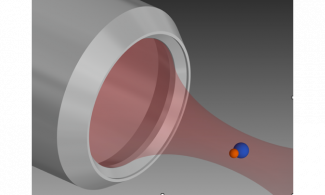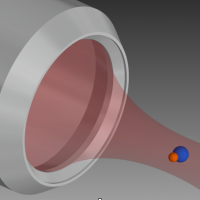News
Single molecules assembled and under control!
In a recent publication in PRL, we demonstrate the assembly of a single molecule with full quantum state control – including both internal and external states – starting from a single pair of atoms. Molecules, compared to their atom counterparts, generally possess a much richer internal structure and can interact with each other via long-range dipole-dipole interactions. At ultracold temperatures, these properties of molecules may be utilized for various quantum science applications, where individual molecules can act as building blocks of a quantum computer or quantum simulator. To realize these applications, individual control over all the quantum degrees of freedom of a single molecule has long been sought. Significant progress has been made towards this goal in recent years, including trapping molecular ions in ion traps and trapping neutral molecules in optical tweezers.
In our work, we start from a single pair of sodium and cesium atoms laser-cooled and trapped in an optical tweezer formed by focusing a laser to an intense spot. The atom pair is converted to a molecule by magnetoassociation near a Feshbach scattering resonance, whereby a magnetic field is ramped under the right conditions to bind the two atoms together. Crucially, in this process, the resulting quantum state of the molecule is unique and determined entirely by the state of the initial atoms. In particular, by carefully preparing the initial atomic states, we can create the molecule in specific motional and internal states, thereby achieving quantum state control over the molecules.
This work overcomes challenges previously encountered in our experiment, where single molecules had been formed using optical means but were subsequently lost rapidly due to the intense optical tweezer light [Liu et al., Science 360, 900 (2018); Liu, Hood, Yu et al., PRX 9,021039 (2019)]. This work also complements a separate approach here in the CUA of directly laser-cooling and trapping single molecules in optical tweezers [Anderegg et al., Science 365, 1156 (2019)], by attaining a single molecule in its motional ground state without performing any additional cooling on the molecules, a step that is typically very challenging.
At present, the molecules that are formed are weakly-bound, meaning that the bonds between the two atoms are very weak, and do not yet possess a large electric dipole moment, which is necessary to generate entangling interactions. With an additional step of vibrational state transfer to a state that possesses a large electric dipole moment, quantum science applications with molecules assembled in optical tweezers are within reach.

Image Caption: Graphical rendering of a single molecule trapped at the center of an optical tweezer.
